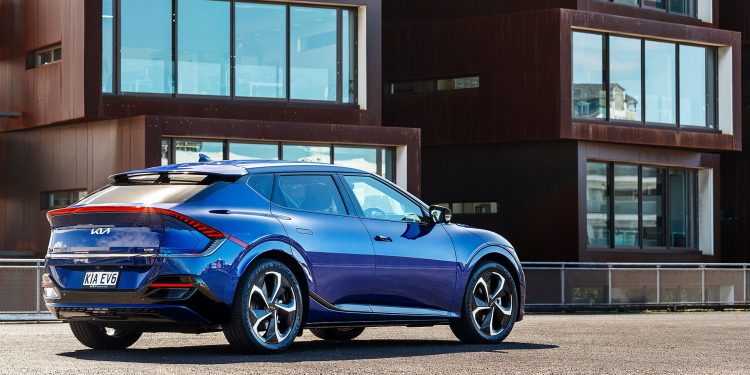2022 Kia EV6 GT-Line AWD review
Words: Kyle Cassidy | Photos: Tom Gasnier
Kia is undergoing a transformation of sorts, and it started with an edgy new logo. It’s emerging as a major player in the EV space, and the new EV6 is a signal of its intent to dominate. We check out the European Car of the Year.
The new EV6 makes a strong first impression for it’s not your usual looking vehicle. And people are intrigued to discover it’s a Kia, but then it’s the brand with the power to surprise. Well, that was then; Kia now wants to inspire you. Even Kia NZ says it’s hard to pigeonhole just what sort of vehicle the EV6 is, though officially it’s deemed to be a medium SUV. It does have a modicum of added ground clearance… The styling is fresher than the usual showroom fare, though to some it might look like a modernised Rover SD1 Vitesse.
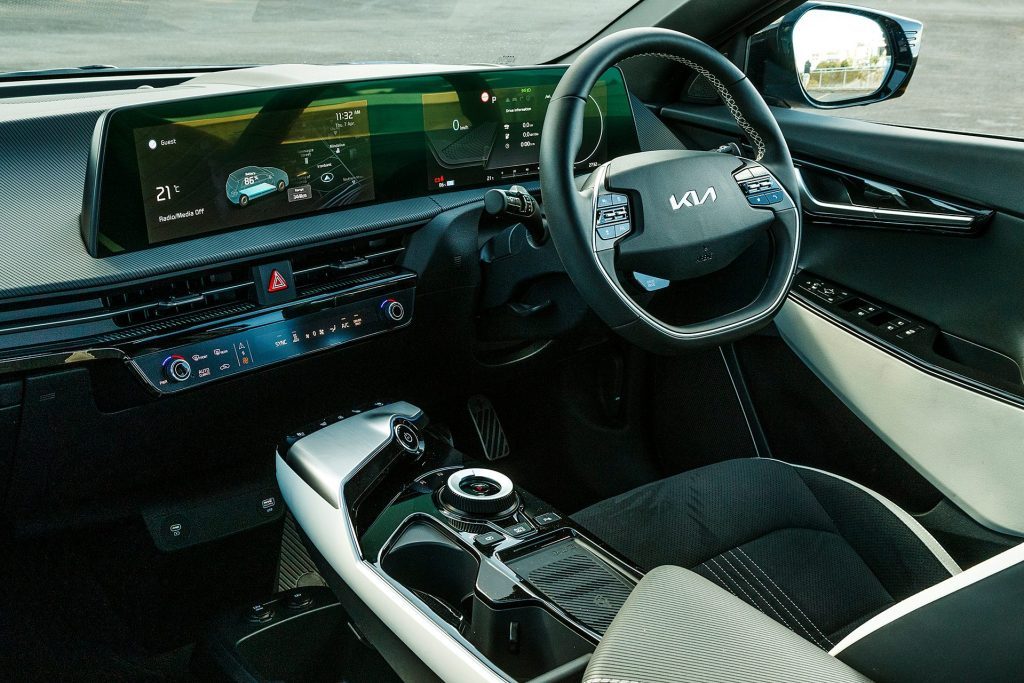
It represents the first of a raft of all-new electric models from Kia as the Korean moves to become a major EV force – 14 new examples will launch by 2026. Not all of those will be coming here but many will as the brand pledges to reach carbon neutrality by 2045, encompassing all aspects of the business from R&D, procurement and manufacturing through to sales and the end of life process.
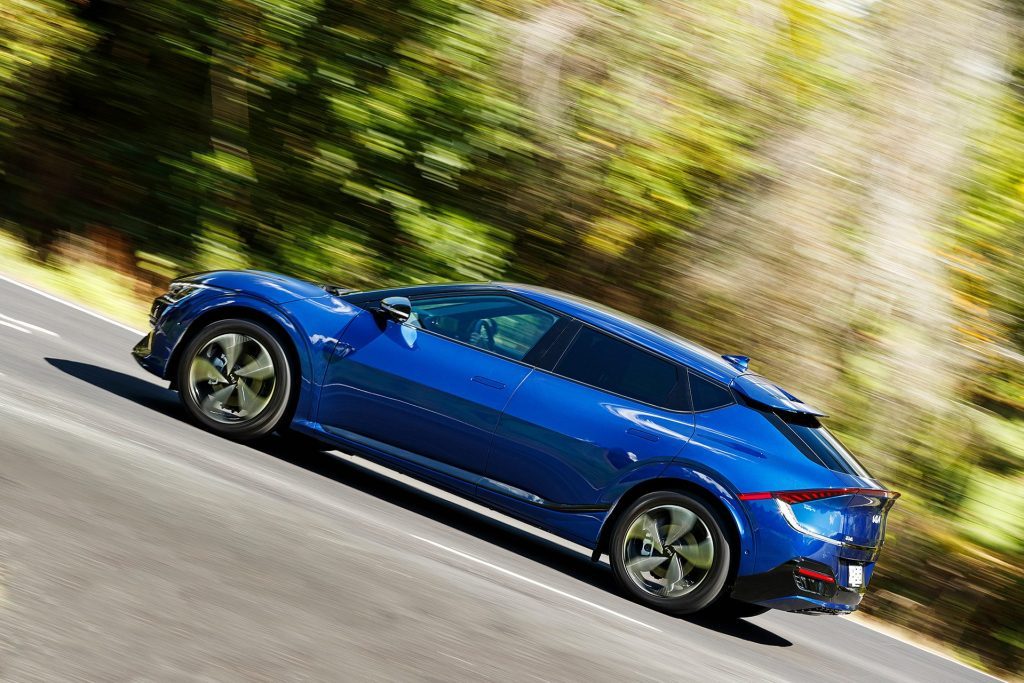
The EV6’s dimensions are unique; it’s long and wide but low, sitting on Hyundai/Kia’s EGMP (Electric Global Modular Platform) with its long wheelbase and short overhangs. Its sculpted form is also functional with a claimed Cd of 0.28. One feature you don’t notice until after dark is the light that’s positioned at the top of the C pillar, casting a glow on the pumped out rear flanks as you approach.
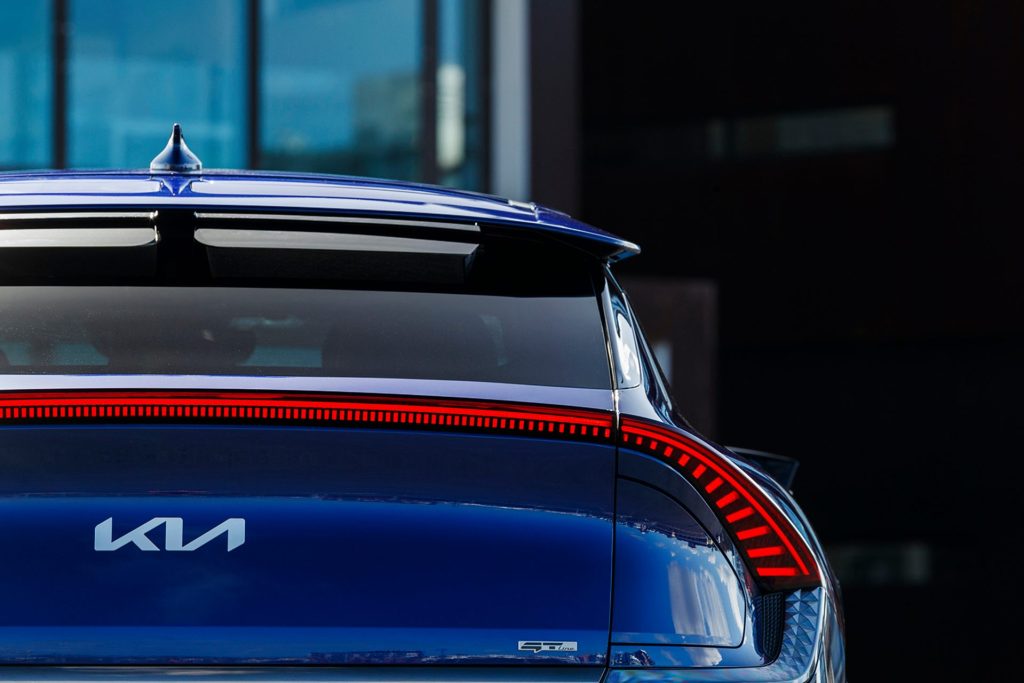
This GT-Line model is the top of the EV6 pile at present, (refer to the table at the bottom of the page for model info), so has a sportier theme to its design, including its black cabin treatment. The seats look a bit firm but are quite comfy and support well, trimmed in a fake suede. There’s practical storage everywhere, the floating console with a big space underneath and a sizeable box in the armrest. The door pockets are well lined too, as is most of the cabin. There are a good many surfaces you feel duty bound to run a hand over, the cabin getting as many positive comments as the spaceship styling. The infotainment system isn’t the smartest you’ll encounter, in both a design and an operational sense, but does the basics well enough. We like the multi-purpose touch buttons below it; press the fan symbol and you get the ventilation controls, press the button for the infotainment and they morph into menu buttons, while the temperature knob then becomes the volume control. The on/off button is well positioned but switching it all off doesn’t automatically engage the park brake, the control for which is not easily accessed.
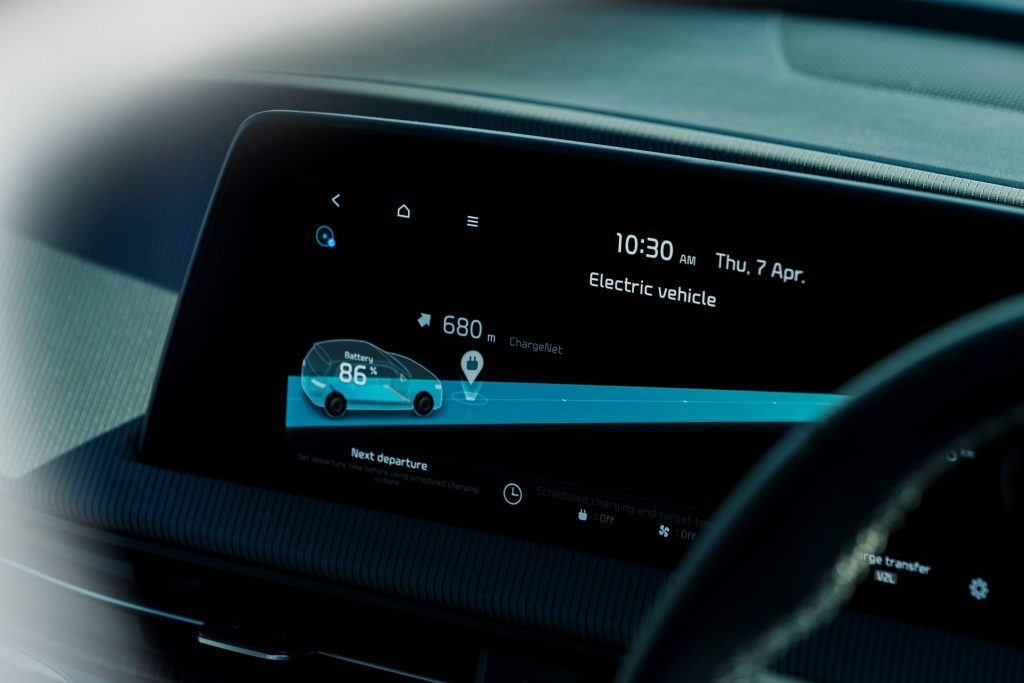
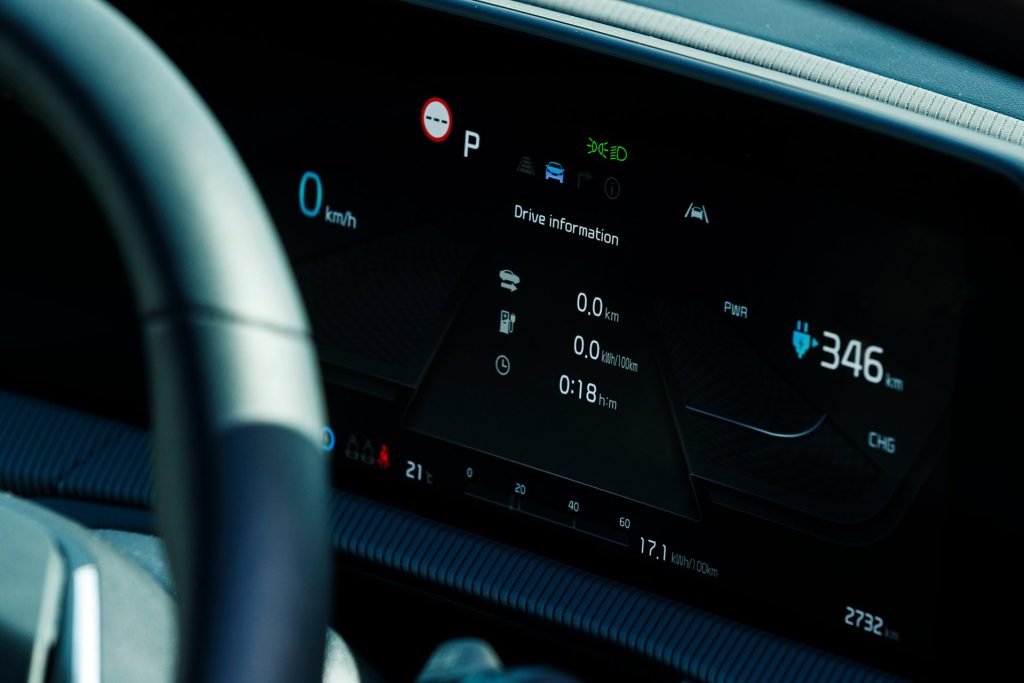
Save for a lack of foot space under the front seats, the rear accommodation passes muster. It’s easy enough to get in and the seat, once reclined a little, is swell, with knee and head room in abundance. For such a large car, there’s not a massive boot. Blame the high-set floor and the sloping tailgate, but then the 480L offered is enough. The practicality extends with easily converted rear seats giving a decent load space of over 1300L. There’s a V2L (vehicle to load) function that lets you plug your appliances in when out and about, and can handle a far bigger load than the toastie machine we plugged in (nothing like working through another lunch break).

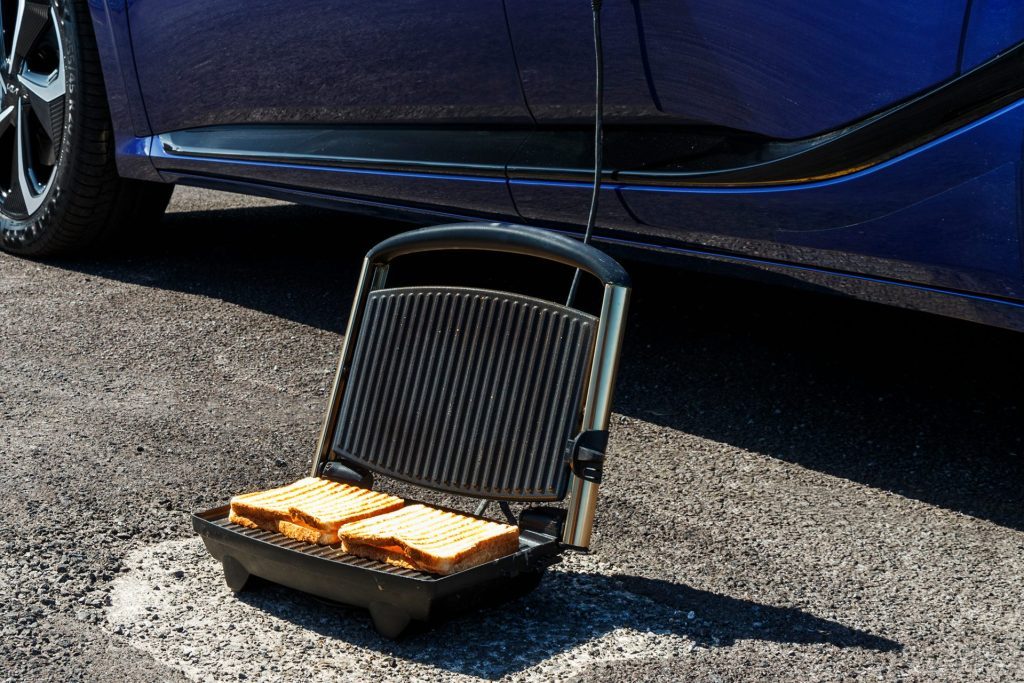
The EV6 can be had with a towing pack, and the 77kWh models can pull up to 1600kg. Okay, so not quite the 3.5 tonnes you haul everyday with your ute, but at least it can tow. However, that also raises consumption and abbreviates range when doing so. And we can’t imagine that plugging in at a fast charger is easy with a trailer in tow. Moreover, those charge points are beginning to get a little more crowded we have noticed, with a lot more Leaf litter about.
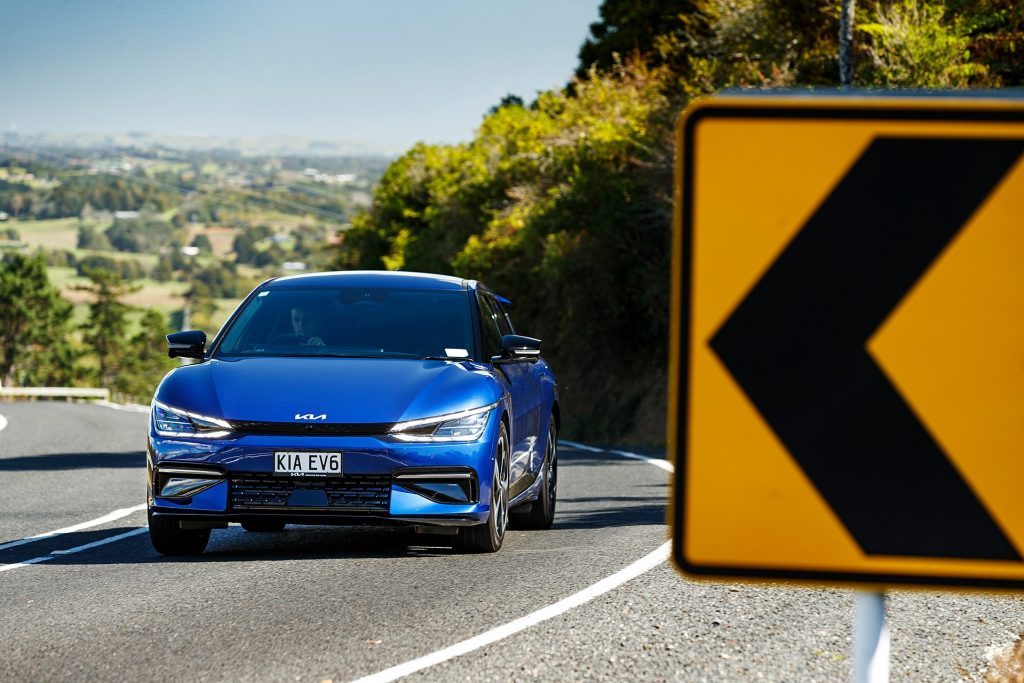
A good time to talk charging then. The EV6 is capable of being charged from 10 per cent to 80 per cent in 18 minutes. The key word is ‘capable’, as there’s only a handful of superfast chargers here that can deliver sufficient power to utilise the full capacity of its 800V system. There’s an 11kW on-board charger and with an AC wallbox the battery will recharge from 10 per cent to full charge in a claimed 7hr 20. The chargebox would be recommended as the portable/emergency lead takes forever (around 20 per cent added over 12 hrs). A half hour on the 50kW DC pump delivered 24kWh, with 110km of range added. But these fast charges will be occasional as you’ll learn to love charging at home, and not having to wait or worry. Overall efficiency Kia rates at 18kWh/100km, and we averaged just over that. On an Auckland to Hamilton return trip on the expressway it registered 18kWh/100km. That was in Eco mode mind you but it doesn’t feel meek and strangled in said setting so why not maximise the potential energy content of the battery?
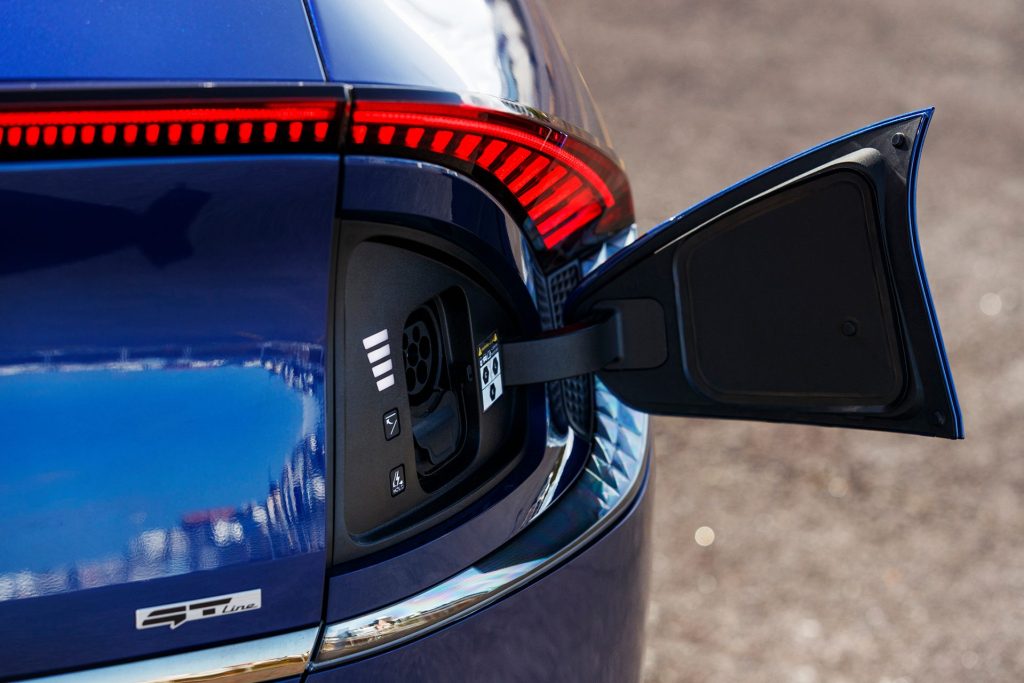
The regenerative braking has various modes to suit your preference; three set levels adjusted via the paddles, adaptive (helps keep flow with the traffic in front) and full one-pedal driving. We reckon ultimate economy can be had by fiddling with the brake regen via the paddles. Backing it right off once up to speed helps maintain your momentum by coasting (EVs can roll on for a surprising distance) and then using the paddles and the regen to bring you to a halt optimises range. You can even pull the car up by holding the paddle in, whereupon it comes to the smoothest of stops. Driven thus, some crosstown journeys had the trip computer registering consumption in the low teens. Most will prefer the one-pedal mode which requires a lot less thought. Just remember the paddling technique for when your range anxiety starts peaking. But with a 400km-plus potential, it won’t much.
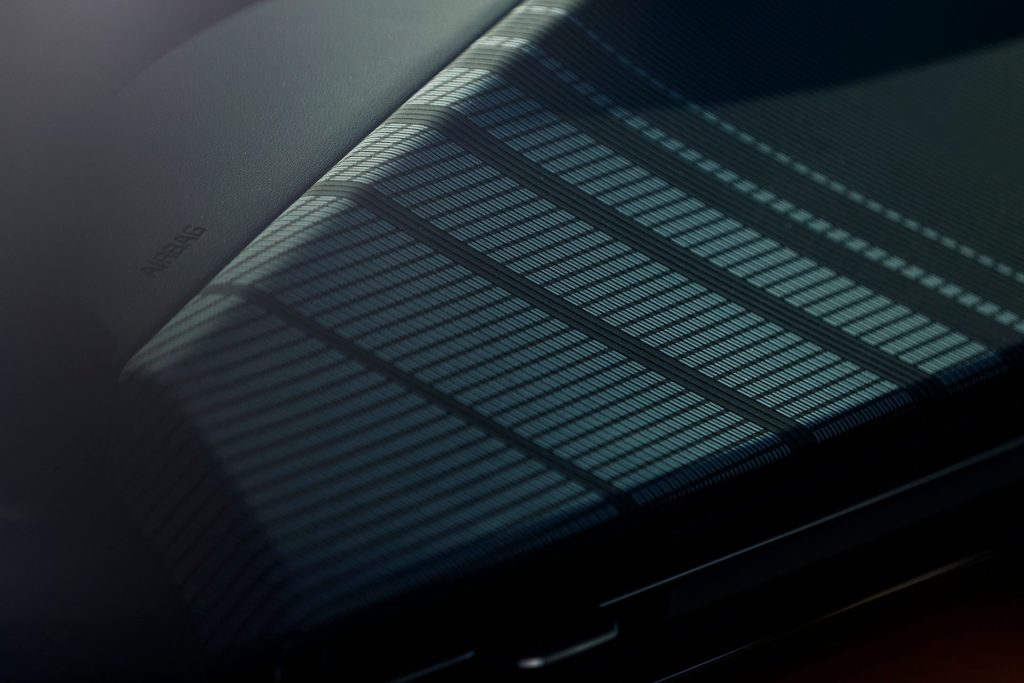
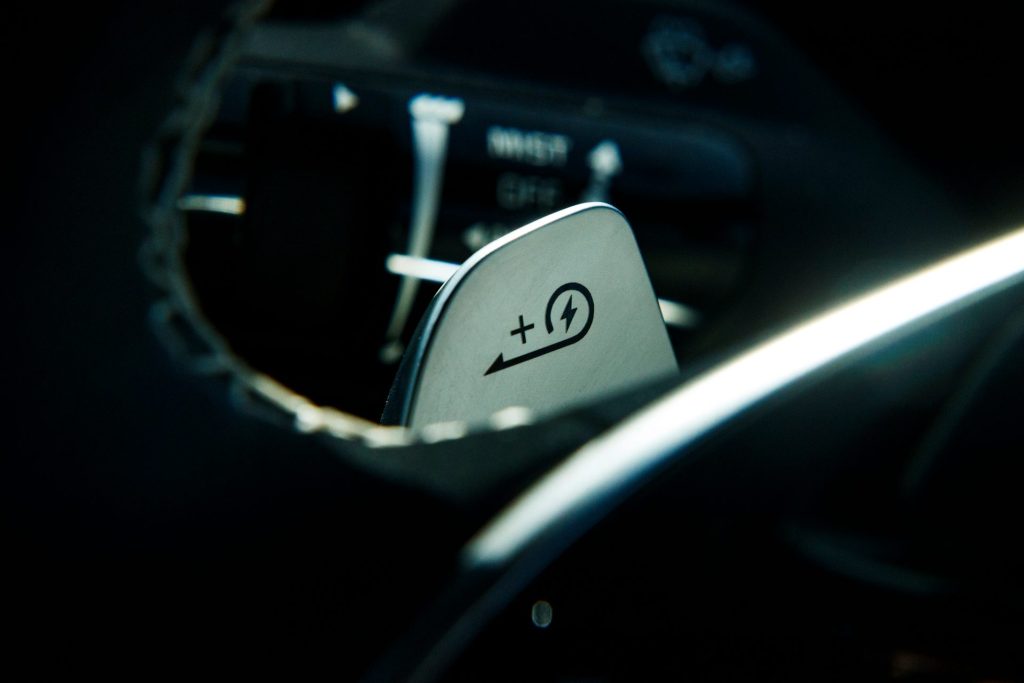
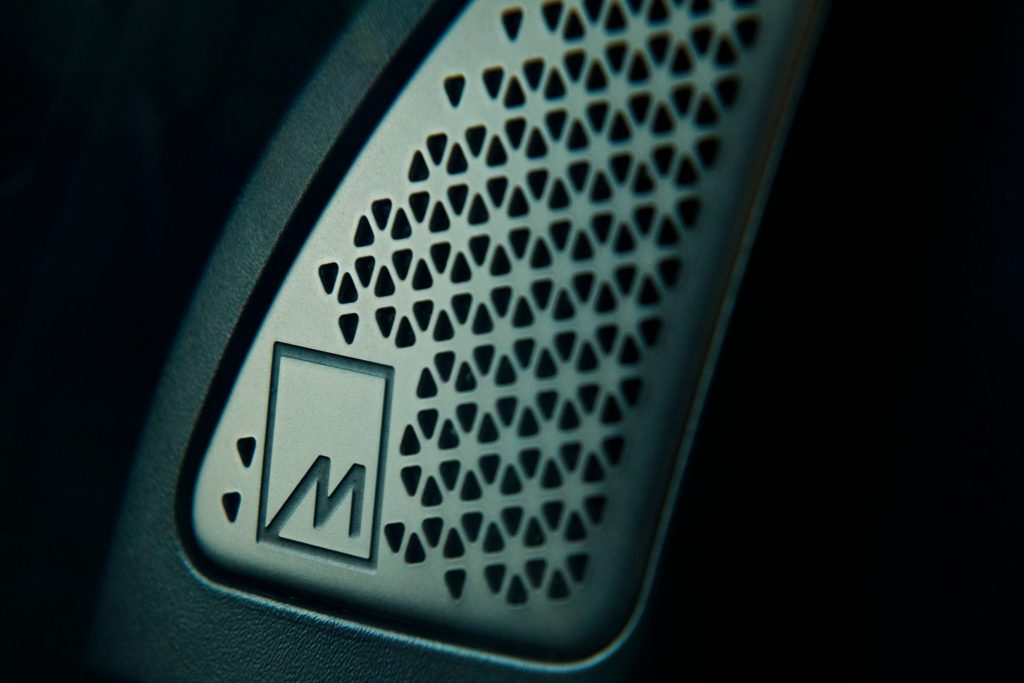
The GT-Line has dynamic intent, so its general ride characteristics have a hint of sport to them. Kia NZ claims the EV6 has ‘a locally tuned handling package’ thanks to suspension fettling carried out in Australia where road conditions are akin to ours. And so the GT-Line has competent damping, and while you’re aware of the bumps, it does a good job of sorting them. The ride is always controlled, waft free, and it won’t squat under acceleration (and with 605Nm pushing it on, it feels quick). Nor does it dive when slowing. It’s good at dispersing speed humps too.
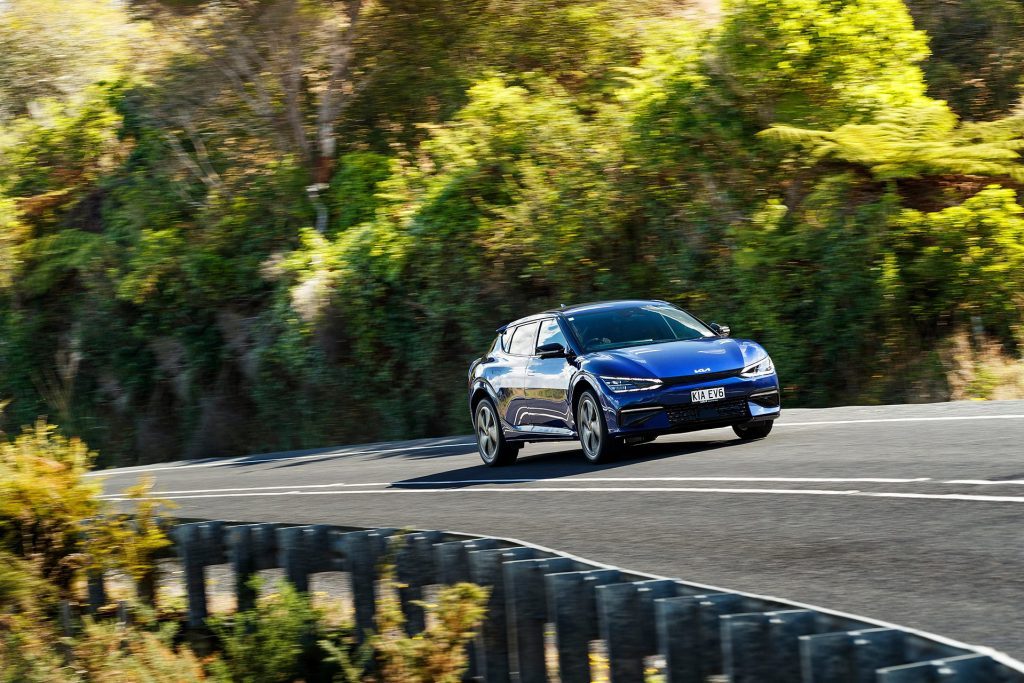
The steering is breezy but the turning circle is larger than desirable and you realise how wide the car is when parking. When you do use the brake pedal, it feels good under foot, not too snatchy. You can make the action sharper if you want by activating the sport braking mode but it’s not really advisable, nor that easy to do.
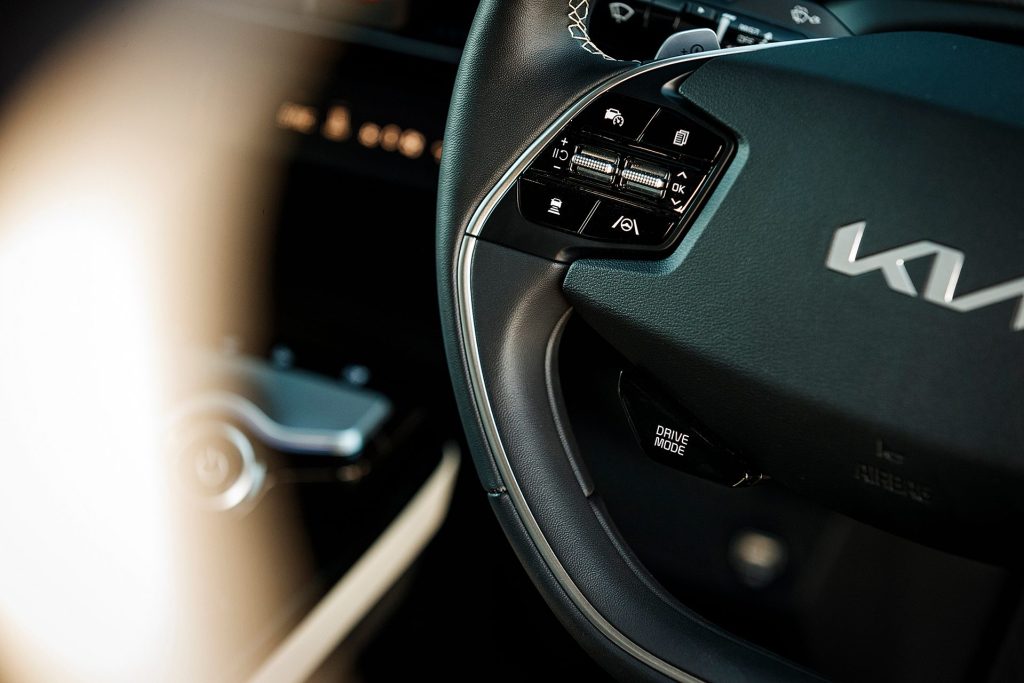
Changing the drive modes is made simple however with a dedicated button on the steering wheel. Amp it up into Sport mode and you better feel the efforts of the 605Nm, punching from 50-100km/h with verve. The EV6 does a good job of living up to its GT badging when curves are encountered. Kia spent the money to bless the EV6 with proper dampers, supplied by ZF Sachs with a piston arrangement that helps amplify the damping characteristics when the going gets more vigorous. It delivers a controlled ride and any unruly dips and dives are mopped up purposefully. Turn it in with intent and there’s some body roll – it’s an SUV you know – but it’s nicely balanced through the curve, the mass controlled, much more so than in the Hyundai Ioniq 5. That’s simply not as poised as this, the EV6 more willing to be pressed through the bends. While there’s always the threat of understeer, it gets on with the job and only when really hustled is the ESP roused. But as soon as it has done its thing, it disappears into the background again.
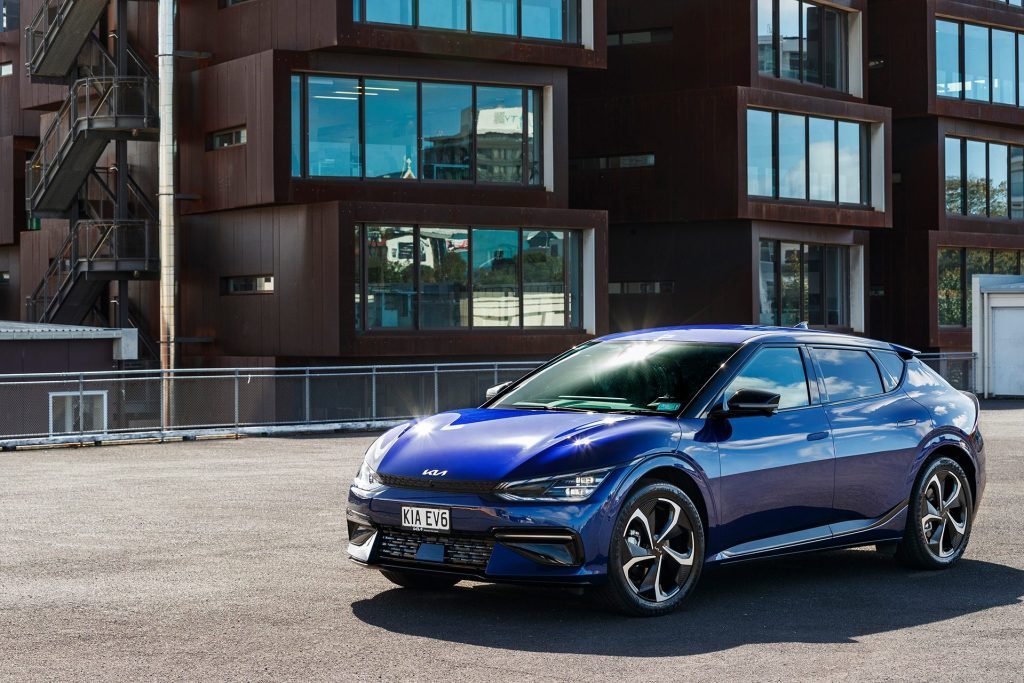
The steering has a mild inconsistency as you turn it further away from centre and more feel would be nice but otherwise it’s easy to interact with. The regenerative brake effect is well tuned, it comes on smoothly when you’re off the accelerator, and so makes for quick and unstressed progress. Coupled with subdued tyre roar and minimal wind noise, it’s a good highway companion.
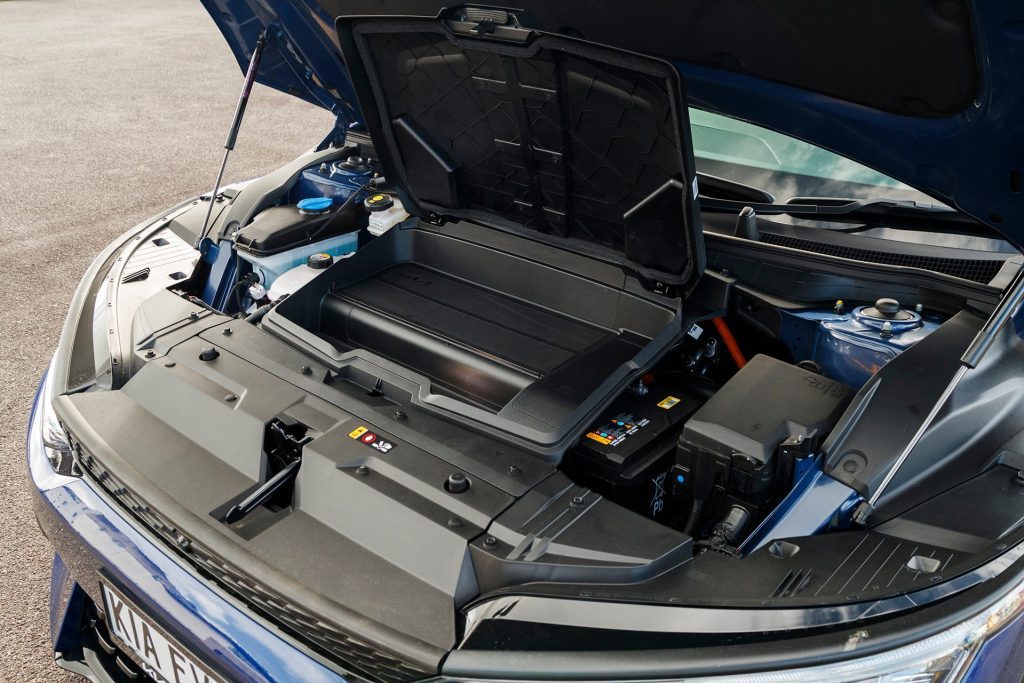
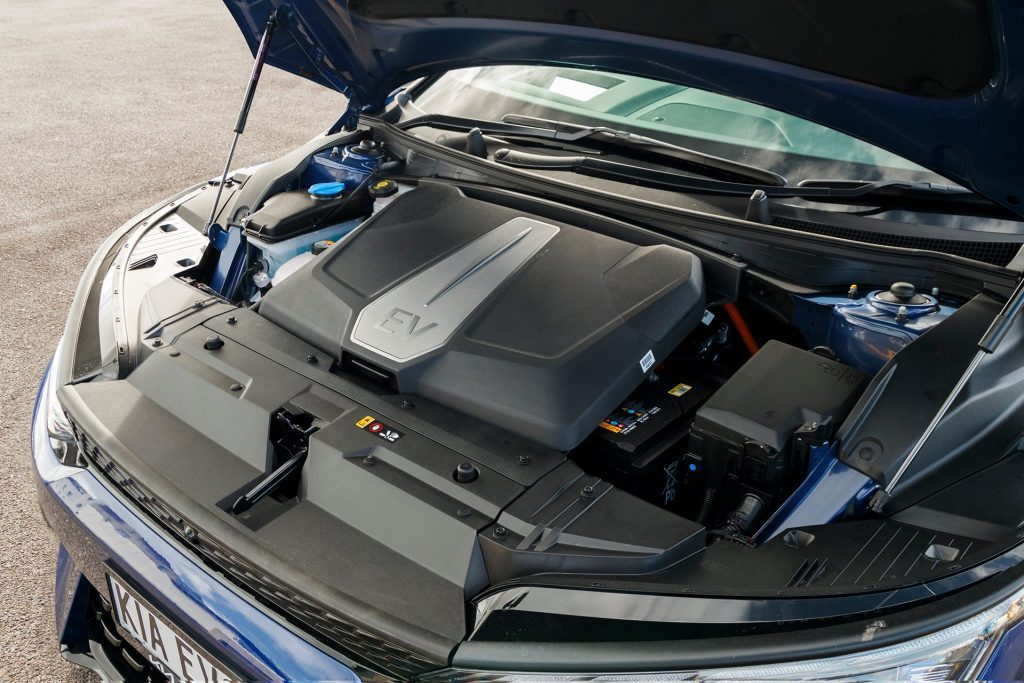
There is another EV6 coming, the kosher GT, with 430kW thanks to electric motors that spin to 21,000rpm. Never thought we’d see the like from Kia, but then the electric age is the great leveller. This EV6 pushes Kia up into the six-figure bracket for the first time, and it’s not out of its depth.
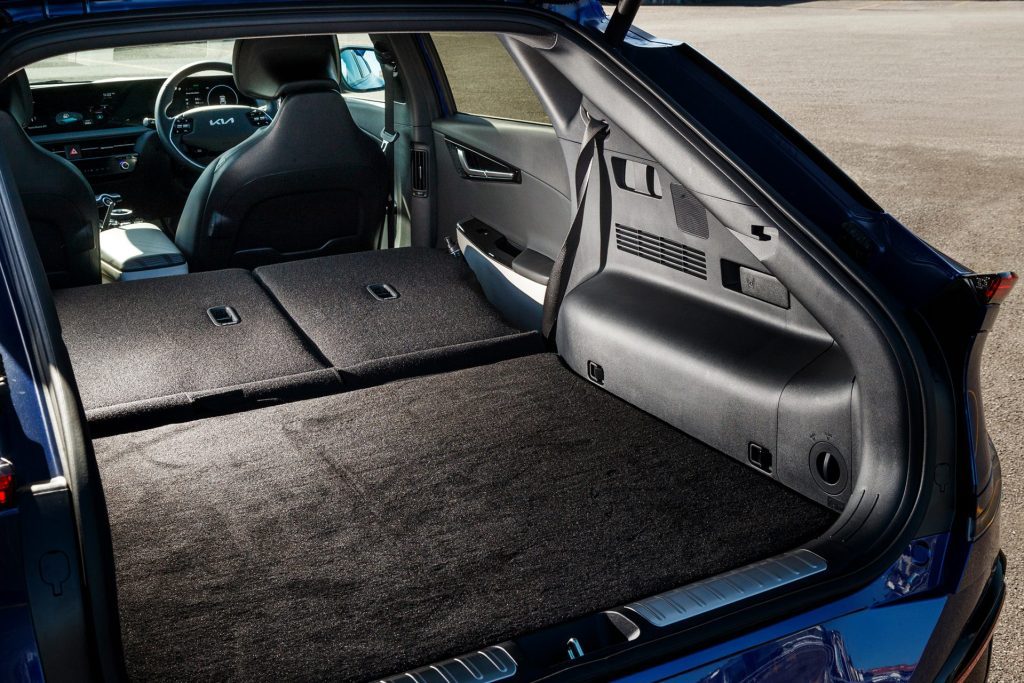
Yes, the GT-Line is expensive at $106,990, more than a Tesla Model 3 Performance, while the upcoming BMW i4 eDrive40 is $109,900 (before cost options). It’s why we’d be more tempted by one of the Air models, the rebate helping lower the long range Air to $70k, while the smart money is on the entry 58kWh model, which is more than enough for most urban dwelling new car buyers.
| Air RWD | Price: $72,990 Battery: 58kWh Motor: 125kW/350Nm Cons:16.6kWh/100km Range: 394km (WLTP) 0-100km/h: 8.5sec |
| Air RWD LR | Price: $78,990 Battery: 77.4kWh Motor: 168kW/350Nm Cons: 16.5kWh/100km Range: 528km 0-100km/h: 7.3sec |
| Earth AWD | Price: $94,990 Battery: 77.4kWh Motors: 239kW/605Nm Cons: 17.2kWh/100km Range: 506km 0-100km/h: 5.2sec |
| GT-Line AWD | Price: $106,990 Battery: 77.4kWh Motors: 239kW/605Nm Cons: 18.0kWh/100km Range: 484km 0-100km/h: 5.2sec |
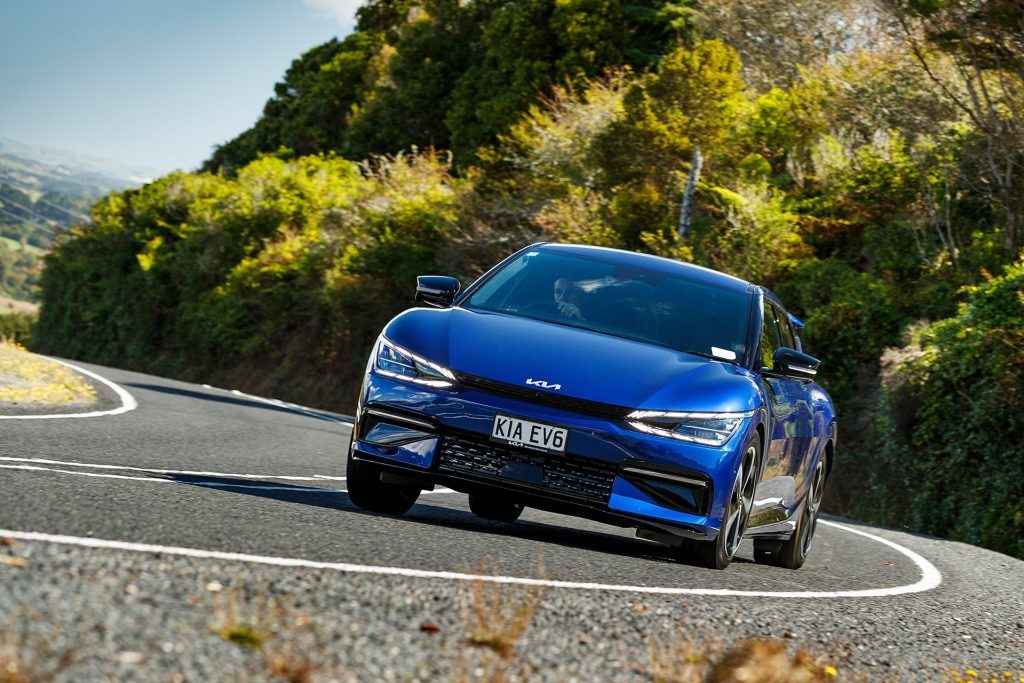
| Model | Kia EV6 GT-Line AWD |
| Price | $106,990 |
| Clean Car Discount | Neutral – $0 |
| Motor | dual, 239kW/605Nm |
| Battery | 77.4kWh net |
| Range | 484km (WLTP) |
| Drivetrain | single-speed auto, e-AWD |
| Energy Use | 18kWh/100km |
| C02 Output | 0g/km |
| 0-100km/h | 5.31sec |
| 80-120km/h | 3.40sec (105m) |
| 100-0km/h | 37.10m |
| Stability systems | ABS, ESP, TV |
| Safety | AEB, ACC, BSM, LDW, RCTA, ALK, AHB |
| Luggage capacity | f-20L, r-480-1300L |
| Tow rating | 750kg (1600kg braked) |
| Service intervals | 12 months, 15,000km |
| Warranty | 5yrs, 100,000km |
| ANCAP rating | not yet rated |
| Weight | 1650kg (claimed) |


